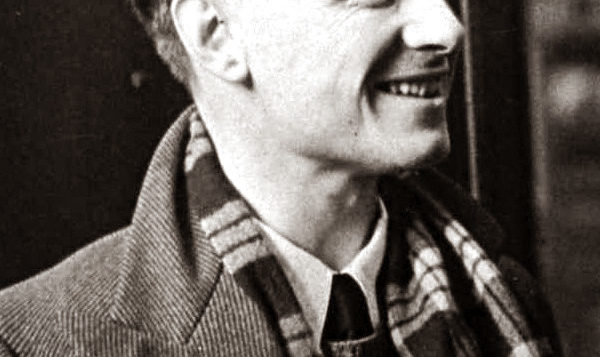 ISHERWOOD IN TRANSIT
ISHERWOOD IN TRANSIT
Edited by James J. Berg and Chris Freeman
Univ. of Minnesota Press
267 pages, $27.
AMONG GAY WRITERS who emerged from the first half of the 20th century, Christopher Isherwood remains one of the most intensively studied. One reason is that large amounts of material about him are available, with the bulk of his private papers held at the Huntington Library in California, largely from a donation by his long-time partner, artist Don Bachardy. This collection of essays grew out of the latest round of research; it is based on papers presented by seventeen writers at a conference at the Huntington in 2015.
Repackaged conference papers tend to make for dreadful books, readable only by specialists with magnifying glasses. Happily, Isherwood in Transit is much better than many collections and contains a number of chapters that will be of interest not only to gay readers but also to those interested in the milieux through which Isherwood passed, notably Germany and Japan. These wanderings are the main focus of this volume, whose editors have produced previous books on other aspects of Isherwood’s life and work. The idea of “transit” is here taken rather broadly, with both physical travels and what might be called internal transits, such as Isherwood’s religious experiences. Even his entirely fantastical Mortmere stories, compiled with Edward Upward during their college years, are covered here. Isherwood once said: “Perhaps I had traveled too much, left my heart in too many places.” But it is this peripatetic habit that gave us much of his best writing, as this volume shows.
The Mortmere material, like the Vedanta chapters, is a specialist’s treasure trove, giving us an idea of Isherwood’s early willingness to write more-or-less publicly about things normally considered private. He is not unique among gay writers in wearing his heart on his sleeve, but unlike most, he placed all his private selves on display and labeled each so readers could not mistake what they saw. He famously began Goodbye to Berlin with the phrase “I am a camera,” but in fact that camera faced both ways, like today’s smartphones that allow the photographer to include himself in the picture. In any case, the camera recorded whatever it saw, and Isherwood eventually wrote it all down, using some material several times.

The most interesting chapters are those on his time in Germany, his transition into California life, the background and writing for A Single Man, and the chapter titled “Pacific Rimming,” which covers Isherwood’s visits to Japan in 1938 (briefly) and the longer visit with Don Bachardy in 1957. The latter event is chronicled mostly in a journal that chapter author Jaime Harker, a professor at the University of Mississippi, has sifted for nuggets. What emerges in “Pacific Rimming” is a capsule study of Japanese sexuality shortly after the war, with extensive discussion of sex tourism in that period. The fact that Isherwood disapproved of the mechanical nature of this activity make his observations all the more striking, as in this journal entry on “sex-colonists” he knew: “[He] boasted suggestively of his conquests in bath-houses … Ah, how disgusting this sexual colonialism is! And how guilty of it I have been, myself, when young! On the one hand, there is a quite vehement cult of the Japanese; it is regarded as tasteless and almost perverse if you dream of any non-Japanese sex partner. And yet, how these people despise the Japanese in their sex-relations with them.”
Also in 1957, Isherwood met Japanese writer Yukio Mishima, who visited L.A. on a book tour. Mishima, who at age twenty had been a popular companion for American servicemen after the war, had developed a taste for American men and, according to writer Faubion Bowers, once “flew over to America just for sex.” Whatever his other activities may have been, Harker sets forth the developing friendship he had with Isherwood (and his lust for Bachardy). Isherwood assisted Mishima with gay community contacts in L.A. and San Francisco during visits, but also with professional connections, such as referring Mishima to publisher Frank Taylor, who facilitated the U.S. publication of a short story collection.
Mishima was more-or-less “out” after publication of Confessions of a Mask in 1949 in Japan and 1958 in the U.S. This book involved the narrator’s apparently intertwined desire for homosexual love and death. Mishima’s magnetic attraction to young men, combined with his fame as a writer, allowed him to drift eventually into cult-leader status, which enabled him to create a small private army. Soon after that, he publicly and spectacularly committed ritual suicide (seppuku) and had his head chopped off by a disciple.
Not long before his colorful departure (chronicled in the 1985 movie Mishima: A Life in Four Chapters, with a score by Philip Glass), he wrote to Isherwood with the unexpected news of his marriage to a woman. The 1958 letter, discussed in some detail in Pacific Rimming, includes this plaintive, hopeful, and doubting passage: “I could not get any perfect happiness from my long gay-life and now hope to get it (or its elaborate counterfeit) with my heterosexual marriage. Strangely it seems to me that I might get it with not so much difficulty. Do you think it is my wishful thinking?”
Two years later, he was dead at age 45, leaving two children. Isherwood wrote in his diary: “I suppose he had become completely crazy. I just cannot relate this to the Mishima we met.” These sections about Japan and about the way Isherwood viewed Mishima and the nature of male leadership are exceptionally thoughtful and engaging. Anyone with an interest in Isherwood or in Japanese culture and sexual patterns will find this book a worthwhile acquisition.
Alan Contreras, a writer and higher education consultant based in Eugene, Oregon, is the author of The Captured Flame: Notes on Books, Music, and the Creative Force.






